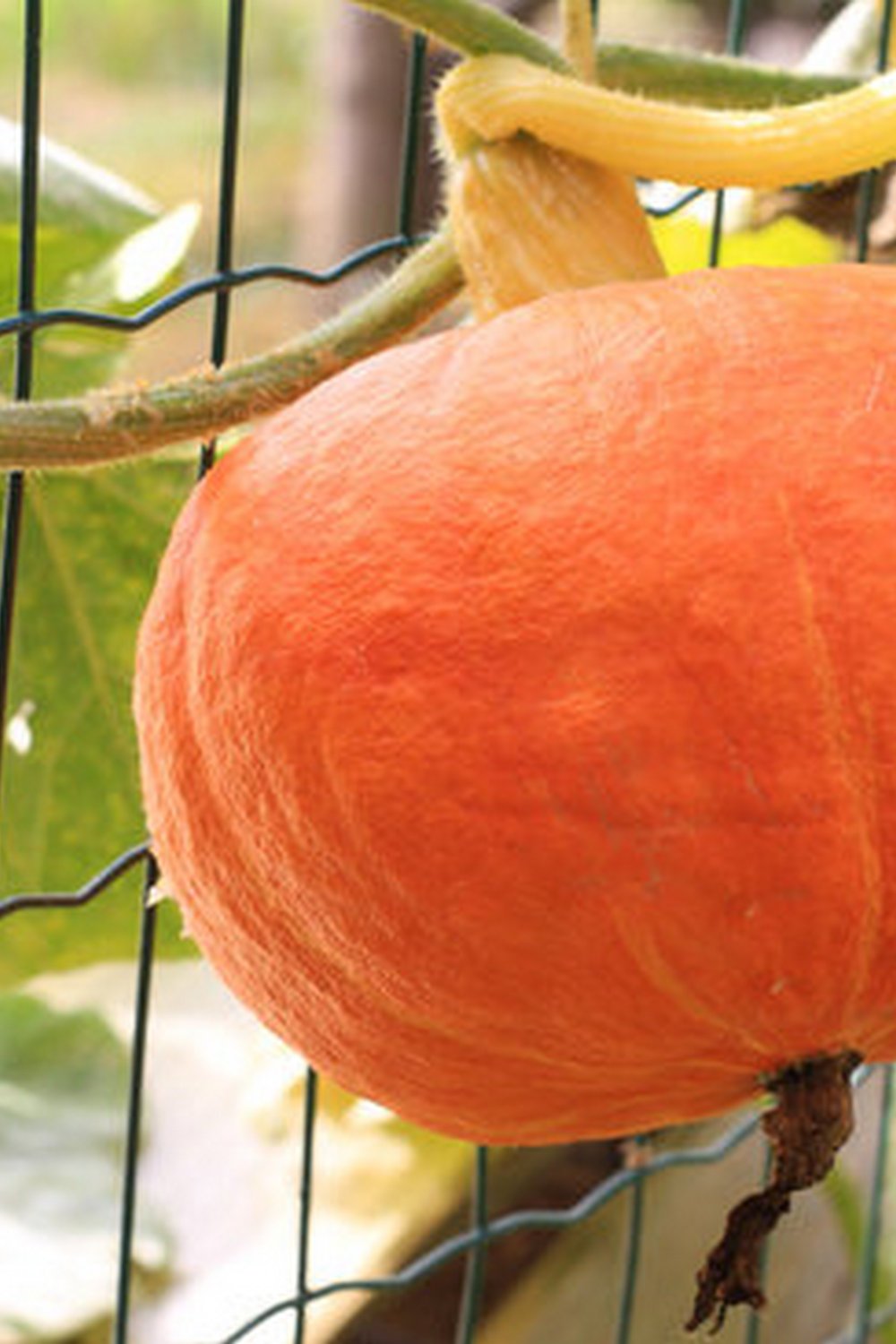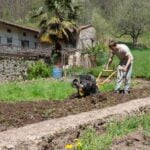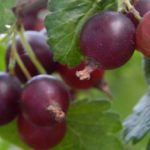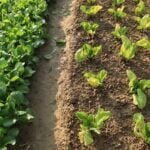How often should you water vegetable gardens? Proper watering is essential for the health and yield of your vegetable garden. Understanding the specific water needs of different vegetables, as well as factors such as climate and soil type, is crucial in determining how often to water your garden. In this article, we will delve into the importance of proper watering for vegetable gardens, explore the varying water requirements of different vegetables, and provide practical tips for effective watering techniques.
The impact of watering on plant health and yield cannot be overstated. Insufficient or excessive watering can lead to stunted growth, reduced crop production, and increased susceptibility to diseases and pests. By understanding the water needs of your vegetables and implementing best practices for watering, you can ensure that your garden thrives and produces bountiful harvests.
As we delve deeper into this topic, we will discuss factors such as climate, soil type, and plant growth stage that affect how often vegetable gardens should be watered. Additionally, we will explore signs of overwatering and underwatering in vegetable gardens and their consequences.
By providing guidelines for creating a tailored watering schedule by season and emphasizing the importance of water conservation in vegetable gardening, this article aims to equip readers with valuable information to maintain healthy and thriving vegetable gardens.
Understanding the Water Needs of Different Vegetables
When it comes to watering vegetable gardens, it’s important to understand that different types of vegetables have varying water requirements. Some vegetables thrive in consistently moist soil, while others prefer to dry out between waterings. Understanding the specific water needs of each type of vegetable is crucial for maintaining the health and productivity of your garden.
Determining Water Needs
One way to determine the water needs of different vegetables is to consider their native environments. Vegetables that originate from arid regions, such as tomatoes and peppers, tend to require less frequent watering and well-drained soil. On the other hand, vegetables like lettuce and spinach, which come from cooler and more humid climates, need more consistent moisture.
Additionally, observing the growth habits of your vegetables can provide insight into their water needs. Vegetables with shallow root systems, like cucumbers and radishes, may require more frequent irrigation to ensure that their roots stay adequately hydrated. In contrast, deep-rooted vegetables such as carrots and beets are better equipped to access moisture from deeper in the soil.
Adjusting Watering Practices
As your vegetable garden matures and weather patterns change throughout the growing season, it’s important to be attentive and adaptable with your watering practices. During periods of intense heat or drought, you may need to increase the frequency or duration of watering to prevent stress on your plants. Conversely, during cooler or rainy periods, you may need to scale back on watering to avoid over-saturating the soil.
By understanding the unique water needs of different vegetables and being observant of environmental factors, you can tailor your watering practices to ensure that each plant receives the appropriate amount of moisture for optimal growth and yield.
Factors to Consider for Watering
Climate
The climate in which a vegetable garden is located plays a crucial role in determining its watering needs. In hot and arid climates, such as desert regions, vegetable gardens will require more frequent watering to compensate for the rapid evaporation of moisture from the soil.
Conversely, in cooler and more humid climates, the frequency of watering may be lower. It is important to take into account the average temperature, humidity levels, and rainfall patterns when creating a watering schedule for a vegetable garden.
Soil Type
The type of soil in a vegetable garden can significantly impact its water retention capacity. Sandy soils drain quickly but do not hold onto moisture well, requiring more frequent watering. On the other hand, clay soils retain water for longer periods but drain slowly, necessitating less frequent watering.
Understanding the composition of the soil in your garden is essential for determining an appropriate watering regimen. Adding organic matter such as compost can improve both water retention and drainage in the soil.
Plant Growth Stage
The growth stage of the vegetables in your garden also affects their water requirements. Newly planted seeds or seedlings need consistent moisture to facilitate germination and establishment. Once plants are established, they may require less frequent but deeper watering to encourage root development and drought resistance.
As vegetables enter their flowering and fruiting stages, they often require additional water to support robust growth and high yields. Being aware of these different growth stages will help you tailor your watering practices accordingly.
By taking into account these factors such as climate, soil type, and plant growth stage that affect how often vegetable gardens should be watered, gardeners can make informed decisions about their watering practices to ensure optimal health and productivity of their crops.
Signs of Overwatering and Underwatering
Overwatering and underwatering are common issues in vegetable gardening that can have detrimental effects on the health and yield of plants. Identifying the telltale signs of these problems is crucial for ensuring that the right amount of water is being provided to the garden.
One of the most evident signs of overwatering in vegetable gardens is waterlogged soil. When soil becomes excessively wet, it deprives plant roots of necessary oxygen, leading to wilting, yellowing leaves, and stunted growth. Additionally, an unpleasant odor emanating from the soil may indicate poor drainage due to overwatering. On the other hand, underwatering can result in dry, crumbly soil and visibly drooping or withering plants. Leaves may become brown and crispy as a result of insufficient moisture.
The consequences of overwatering and underwatering can be severe for vegetable gardens. Overwatering can lead to root rot and fungal diseases, ultimately causing plant death. In contrast, underwatering can result in wilting, reduced fruit production, and even permanent damage to the plant’s vascular system. By closely observing these signs and taking appropriate action, gardeners can prevent these issues and maintain optimal moisture levels for their vegetable gardens.
Best Practices for Watering Vegetable Gardens
When it comes to watering your vegetable garden, using the right techniques and practices can make a significant difference in the health and yield of your plants. One effective method for ensuring that your vegetables receive adequate hydration is through the use of drip irrigation systems.
Drip irrigation delivers water directly to the base of the plants, minimizing water loss through evaporation and ensuring that the roots receive a consistent supply of moisture. This method is particularly beneficial for larger gardens or those with busy gardeners who may not have time for daily watering.
Another useful technique for efficient watering is the use of soaker hoses. These hoses are designed to release water slowly and evenly along their length, allowing it to seep into the soil and reach the root zones of plants. Soaker hoses are especially effective for watering vegetable beds, as they can be easily placed among the rows or around individual plants, delivering water right where it’s needed without wasting any through runoff or evaporation.
In addition to these techniques, it’s important to water your vegetable garden during the optimal times of day to minimize water loss and promote healthy growth. Early morning is generally considered the best time for watering, as this allows plants to absorb moisture before the heat of the day causes evaporation.
Avoiding watering in the late afternoon or evening can also help prevent issues such as mold or mildew developing on leaves. By practicing these best watering practices, you can ensure that your vegetable garden receives adequate moisture while conserving water and promoting plant health.
| Watering Technique | Advantages |
|---|---|
| Drip Irrigation Systems | Minimizes water loss through evaporation and ensures a consistent supply of moisture to plant roots |
| Soaker Hoses | Delivers water directly where it’s needed without waste through runoff or evaporation |
| Optimal Watering Times | Water your vegetable garden during early morning hours to minimize evaporation and promote healthy plant growth. |
Watering Schedule by Season
Creating a watering schedule tailored to the specific needs of vegetable gardens in different seasons is crucial for maintaining optimal plant health and yields. The amount of water required by vegetable plants can vary significantly depending on the season, as factors such as temperature, sunlight, and plant growth stage all influence their water needs.
By understanding these seasonal variations and adjusting your watering practices accordingly, you can ensure that your vegetable garden receives the right amount of moisture throughout the year.
In the spring, when temperatures are mild and plants are actively growing, it’s essential to establish a consistent watering routine to support healthy root development and overall plant growth. As a general guideline, vegetable gardens should receive about 1-1.5 inches of water per week during the spring months. However, it’s important to monitor the soil moisture regularly and adjust watering frequency based on weather conditions and plant requirements.
During the hot summer months, when temperatures soar and evaporation rates increase, vegetable gardens may require more frequent watering to meet their heightened water needs. It’s recommended to water in the early morning or late afternoon to minimize water loss from evaporation, and applying mulch around plants can help retain soil moisture. Additionally, utilizing methods such as drip irrigation or soaker hoses can deliver water directly to the root zone while reducing wastage through surface runoff.
| Season | Watering Guidelines |
|---|---|
| Spring | 1-1.5 inches of water per week; adjust based on weather conditions |
| Summer | More frequent watering; early morning or late afternoon; utilize drip irrigation or soaker hoses |
As fall approaches and temperatures begin to cool down, there is typically less demand for water in vegetable gardens. However, it’s important to continue monitoring soil moisture levels and provide supplemental irrigation as needed, especially for late-season crops that are still actively growing. In some regions, fall may also bring increased rainfall, which can impact the need for additional watering.
In winter, many vegetable gardens lie dormant or have minimal growth activity due to cold temperatures. During this period, significantly less water is required compared to other seasons.
It’s crucial not to overwater during winter when plant uptake is limited, as excessive soil moisture can lead to issues such as root rot. Adjusting your watering schedule based on seasonal changes and keeping a close eye on your garden’s specific conditions will help ensure that your vegetables receive adequate hydration throughout the year.
By tailoring your watering schedule according to seasonal variations and being mindful of changing weather patterns and plant needs, you can optimize moisture levels in your vegetable garden while promoting robust growth and bountiful harvests all year round.
Water Conservation in Vegetable Gardening
Water conservation is a critical aspect of vegetable gardening, especially in regions where water availability may be limited. By optimizing water usage, gardeners can minimize their environmental impact and reduce the strain on local water resources while still achieving successful harvests. Here are some key points to consider when it comes to water conservation in vegetable gardening:
- Mulching: One effective method for conserving water in vegetable gardens is to use organic mulch, such as straw or wood chips, to cover the soil around plants. Mulch helps retain moisture in the soil, reducing the need for frequent watering.
- Drip Irrigation Systems: Installing a drip irrigation system can significantly improve water efficiency in vegetable gardens. These systems deliver water directly to the base of plants, minimizing waste from evaporation and runoff.
- Proper Timing: Watering vegetable gardens during the early morning or late evening can help reduce water loss due to evaporation. Additionally, it’s important to avoid watering on windy days, as this can also lead to excessive moisture loss.
In addition to these methods, gardeners can also implement practices such as rainwater harvesting and utilizing drought-resistant plant varieties to further conserve water in their vegetable gardens.
Overall, by being mindful of water conservation techniques and making sustainable choices in vegetable gardening practices, individuals can contribute to the preservation of this vital resource while still enjoying bountiful yields from their gardens.
Monitoring and Adjusting Watering Practices
In conclusion, achieving optimal watering for vegetable gardens is essential for the health and productivity of the plants. By understanding the varying water needs of different vegetables and considering factors such as climate, soil type, and growth stage, gardeners can determine the appropriate watering frequency for their specific garden. Additionally, it is crucial to be aware of the signs of overwatering and underwatering in order to prevent potential damage to the plants.
Implementing best practices for watering, such as utilizing drip irrigation and soaker hoses, can help ensure that water is being delivered efficiently to the roots where it is needed most. Furthermore, creating a customized watering schedule based on seasonal requirements allows for tailored care throughout the year. In addition to proper watering techniques, it is important to prioritize water conservation in vegetable gardening by implementing methods to reduce water usage without compromising plant health.
Ultimately, regularly monitoring the moisture levels in the soil and being flexible in adjusting watering practices based on the specific needs of the plants are key components of successful vegetable gardening. By staying attentive to these factors and making informed decisions about watering, gardeners can promote healthy growth and maximize yields in their vegetable gardens. With these guidelines in mind, individuals can enjoy a flourishing and bountiful harvest from their homegrown vegetables.
Frequently Asked Questions
Should I Water My Vegetable Garden Every Day?
Watering your vegetable garden every day may not be necessary and can sometimes do more harm than good. It’s important to check the soil moisture before watering to avoid overwatering, which can lead to root rot and other issues.
Factors such as weather, soil type, and plant needs should all be considered when determining a watering schedule for your vegetable garden.
Am I Watering My Vegetables Too Much?
Overwatering vegetables can cause a variety of problems, including stunted growth, yellowing leaves, and increased susceptibility to diseases. It’s important to monitor the soil moisture levels and adjust your watering accordingly. Instead of watering on a set schedule, observe your plants and the surrounding environment to determine how much water they actually need.
How Long Should I Run My Sprinklers on My Vegetable Garden?
The duration for running sprinklers on your vegetable garden will depend on several factors such as the type of soil, weather conditions, and the specific water needs of your plants. Generally, it’s better to water deeply but less frequently to encourage deep root growth rather than shallow roots near the surface.
Consider using a rain gauge or moisture meter to determine how much water your vegetable garden is actually receiving during each irrigation session.

If you’re looking to get into vegetable gardening, or are just looking for some tips on how to make your current garden better, then you’ve come to the right place! My name is Ethel and I have been gardening for years. In this blog, I’m going to share with you some of my best tips on how to create a successful vegetable garden.





